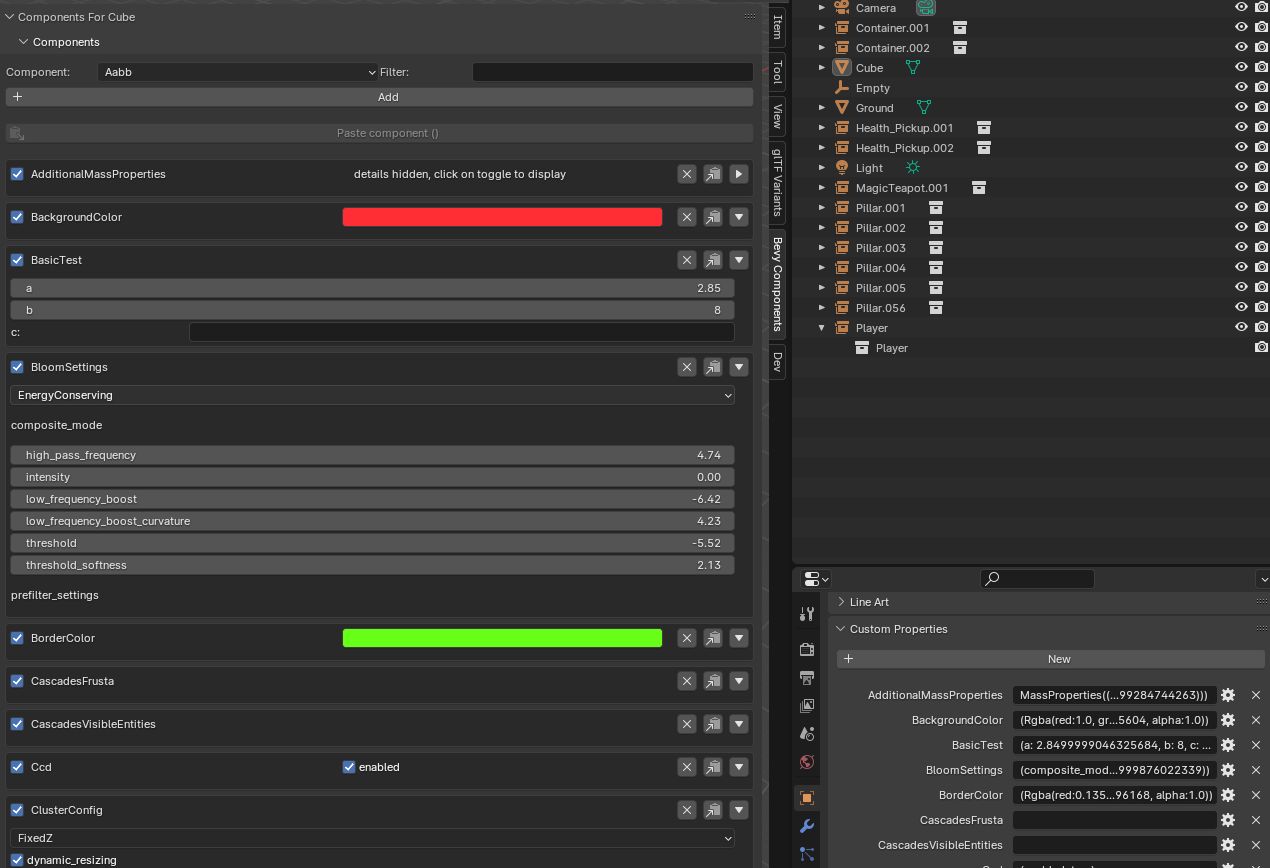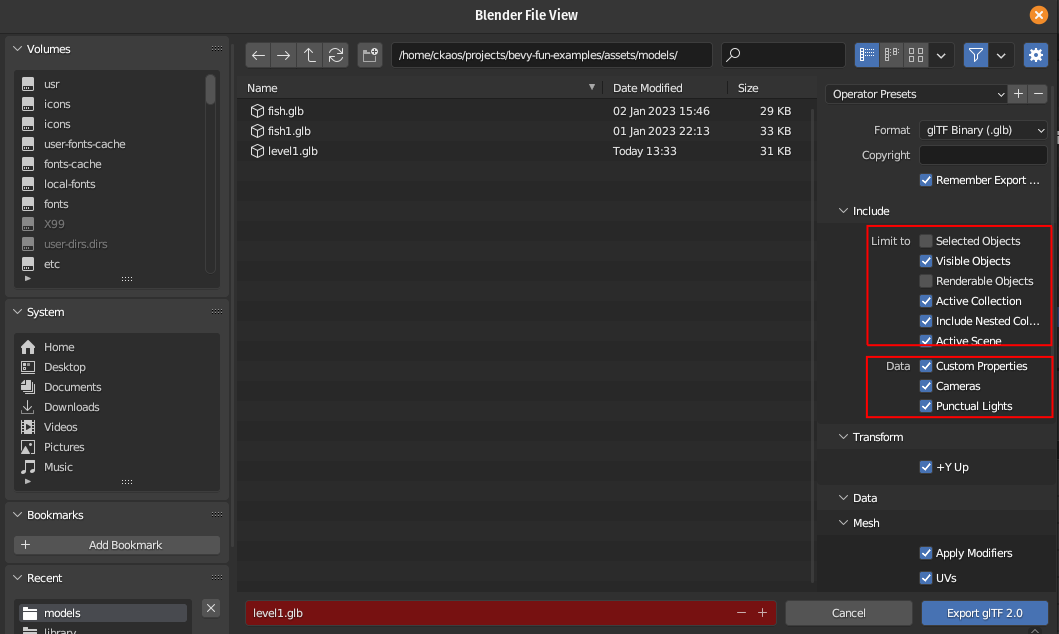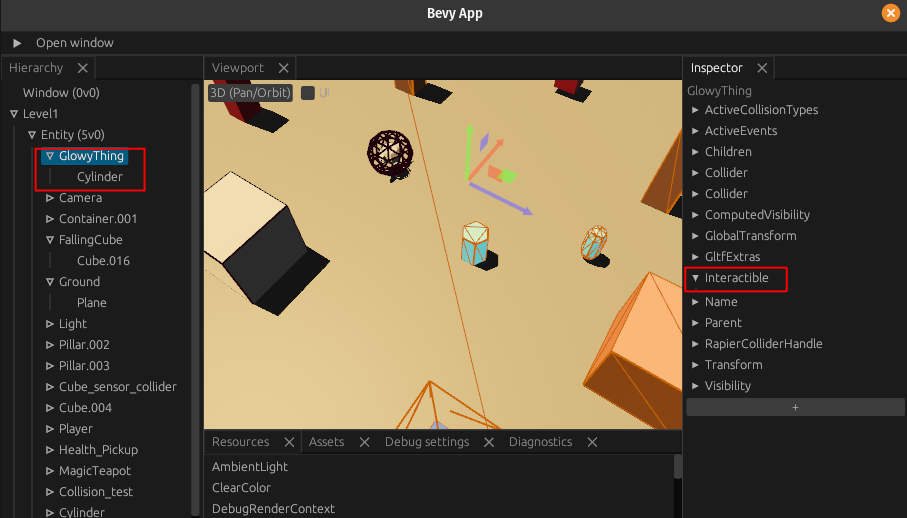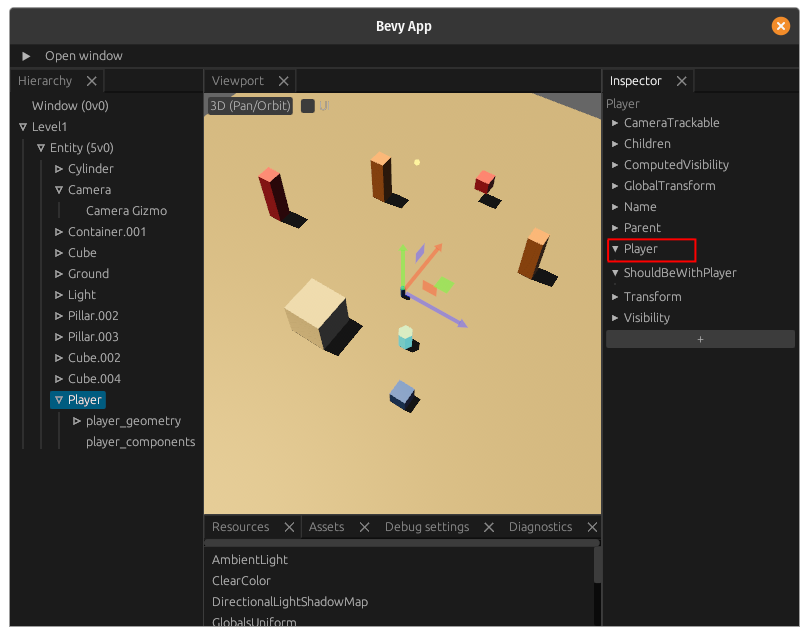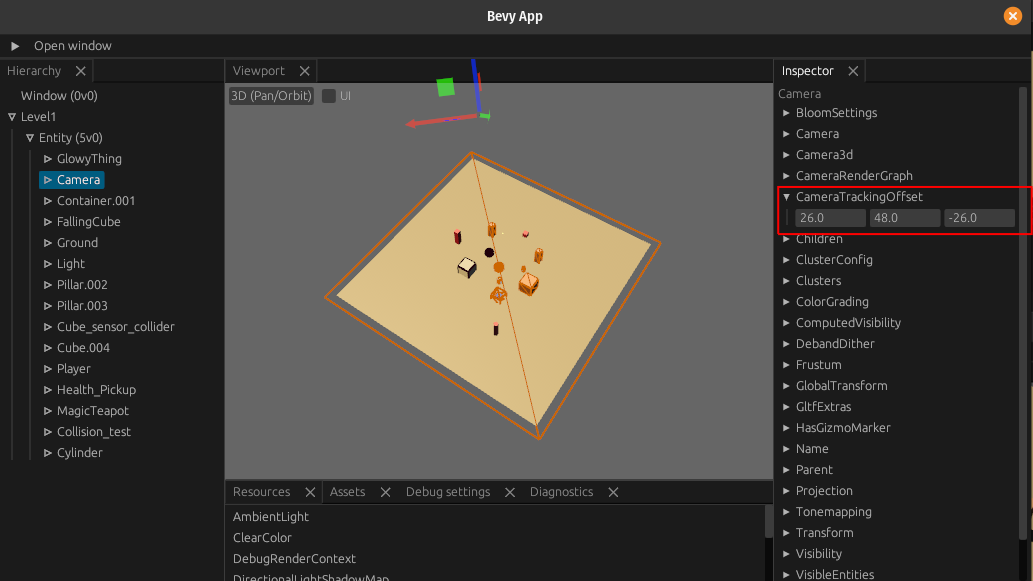mirror of
https://github.com/kaosat-dev/Blender_bevy_components_workflow.git
synced 2024-11-26 21:37:01 +00:00
* adds a new crate: ```bevy_registry_export``` to be able to create a json import of the registered component/type definitions * adds a new Blender addon: ```bevy_components``` that takes that json data to generate custom UIs for components , to be to add & edit components easily in Blender * also adds component metadata per object for more advanced features * etc * updates to bevy_gltf_components & bevy_gltf_blueprints to add legacy_mode to support the "old"/current style component definitions * same with gltf_auto_export Blender add_on * closes #60
1.4 KiB
1.4 KiB
Workflow: UI
The workflow goes as follows (once you got your Bevy code setup)
Bevy side
- create & register all your components you want to be able to set from the Blender side (this is basic Bevy, no specific work needed)
- follow the instructions in the bevy_registry_export to generate a registry export
Component creation
Setup the Blender bevy_components add-on to add & edit your components visually & reliably
Exporting to gltf
- export your level as a glb/gltf file :
- using Blender's default gltf exporter !!IMPORTANT you need to check the following:
- or much better, using gltf_auto_export
Now use your gltf files in Bevy
- load it in Bevy (see the various examples for this)
- you should see the components attached to your entities in Bevy
note: you get a warning if there are any unregistered components in your gltf file (they get ignored) you will get a warning per entity
